Going on a safari during the Great Migration in Africa is a dream trip for many people. While witnessing the Great Migration is a matter of luck, being in the right National Park during the specific season plays a significant role in experiencing this unique event. The question of when to visit Africa to witness the Great Migration naturally arises. Let’s answer your question in detail. First, let’s start with when the Great Migration takes place, where the animals migrate from and to, and how long the migration lasts.
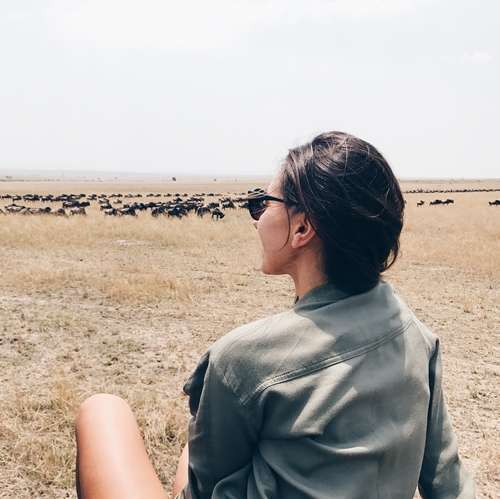
We have been going on safaris in Africa since 2016. Each safari has left a lasting impression on us, but to be honest, the most fulfilling and unforgettable one was the safari we had during the 2017 Eid al-Adha holiday.
Calendar of the Great Migration
January-March
The Great Migration starts from the southern part of Serengeti National Park. This is where antelopes and zebras gather and begin their journey for the great migration.
April-May
These months mark the beginning of the dry season in Serengeti, as the rains come to an end. As a result, all the migrating animals start moving slowly towards the Grumeti River to feed on the lush grasses that grow due to the rainfall.
June-July
In June, as the waters of the Grumeti River recede, antelopes and zebras cross the river, often filled with crocodiles. This is the incredible crossing that you may have seen in documentaries. As July approaches, the animals continue their journey towards the water-rich areas, particularly the famous safari destination, Masai Mara.
August-September
The migration that started in January finally reaches Masai Mara in Kenya by June. Similar to the Grumeti River crossing, the Mara River crossing presents awe-inspiring scenes. It hosts the magnificent passage of millions of antelopes and zebras. The Mara River is a crucial point of the Great Migration, where the same dramatic event unfolds each year.
October-December
By October, the members of the Great Migration who came from Tanzania begin their return journey towards Serengeti as the rainy season starts.
It’s important to note that the Great Migration continues throughout the year. The animals are in a constant state of migration, moving in a clockwise direction between Tanzania and Kenya. If you have plans to fulfill your safari dream in Africa, the calendar mentioned above will be quite useful. However, if you need more detailed information, please don’t hesitate to watch the video provided below.
What is Great Migration?
The Great Migration is an ongoing and continuous event that takes place in Africa. It begins in the Great Rift Valley, where a continent is constantly being reborn. Millions of animals in search of fresh grass constantly migrate from the Serengeti, which surrounds the Rift Valley, following the sun, the moon, and the Earth’s magnetic field. Every year, over one million African antelopes and more than 200,000 zebras must chase the seasonal rains in a 800 km circular path around Tanzania and Kenya. Water is the lifeblood of wildlife. In particular, antelopes can sense where the rains fall from 40 km away. In Serengeti (by the end of February), they pause for the new generation to be born. During a three-week period, African antelopes give birth to 8,000 antelope calves each day.
In Africa, the strongest always prevails. Like all the great migrations in the world, this is a race that is increasingly threatened. Climate change disrupts weather patterns, and the rapidly growing human population is damaging the ancient migration routes of the animals.
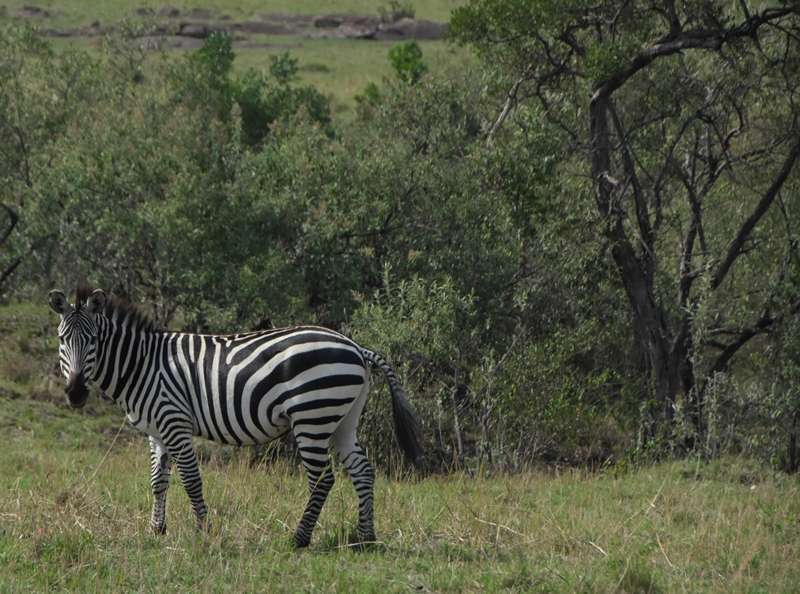
During the annual migration, a quarter of a million (250,000) African antelopes and 30,000 zebras die. In the scorching sun of the Serengeti, hunger drives the animals to run northward. Collective intelligence keeps the herd on the right path, as each animal takes turns leading its neighbor along the ancestral routes.
However, much of the journey is extremely exhausting. Patient scavengers and predators eagerly await those who they know won’t be able to complete the journey. Another migration peaks at the Mara River. Crocodiles have memorized when and where antelopes and zebras will cross. They gather in large groups, awaiting the arrival of the antelopes. And during this crossing, a great frenzy, a natural spectacle, unfolds.
Crocodiles, with their years of experience, know whom to target: the young ones. Although the calves struggle to stay close to their mothers, their efforts are in vain. No matter how hard they try, they cannot escape becoming prey. However, there is also a desperate cycle for the crocodiles. If they can feed well now, they can survive for months or even up to a maximum of one year during times of scarcity. The importance of death for the survival of the herd should not be forgotten.
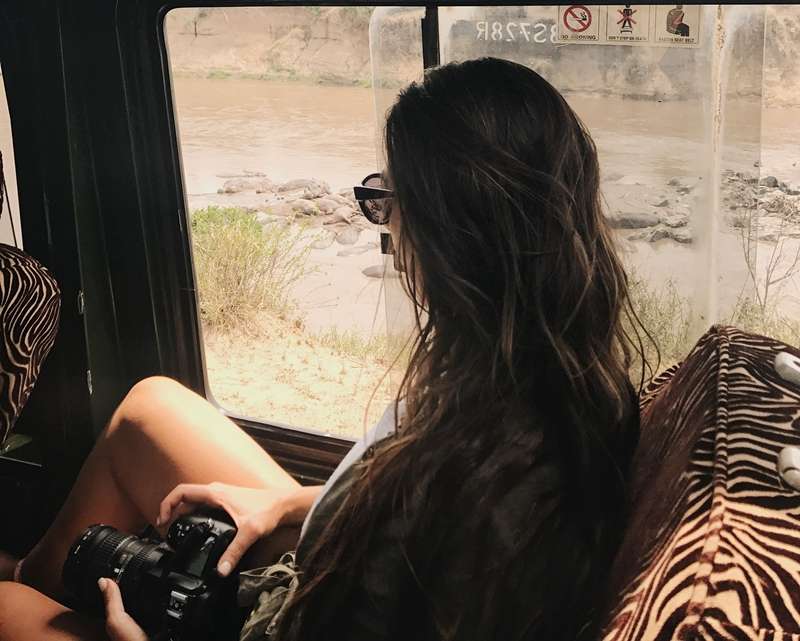
AFRICA’S BIG FIVE
There are five iconic animals in Africa, each with its unique characteristics, known as the Big Five. They are the elephant, rhinoceros, lion, leopard, and buffalo.
LION
Lions inhabit open grasslands rather than wooded areas. Since the vision of other animals is reduced at night, lions mostly hunt during the night. Unlike other predators, lions hunt collectively as well as individually, with the difference being that females are the ones who do the hunting. Males, being more leisurely, expect the meal to be brought to them. The distribution of food after a successful hunt is based on a hierarchy, with lion cubs being the last to receive their share.
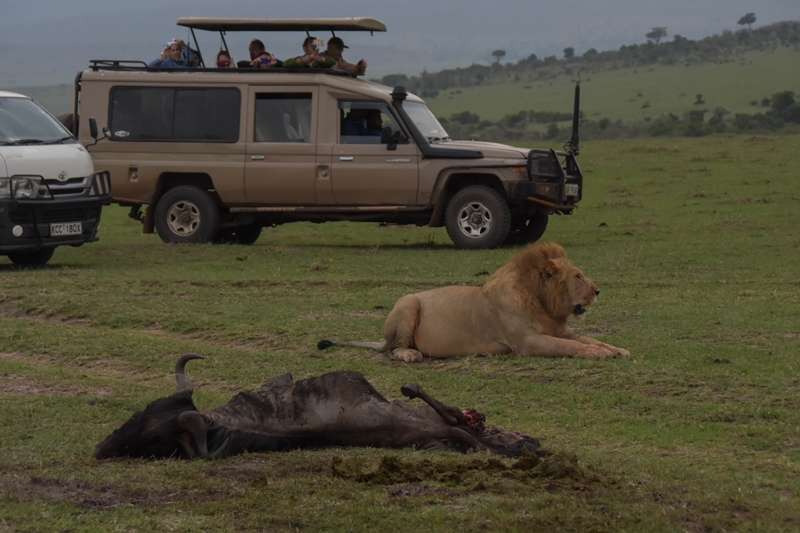
The number of lions, which used to be 200,000 years ago, has drastically declined in Africa, with only around 20,000 remaining today. They have completely disappeared from 26 African countries. In 1980, there were approximately 75,800 lions in the wild, but according to 2015 data, their global population has decreased to fewer than 30,000.
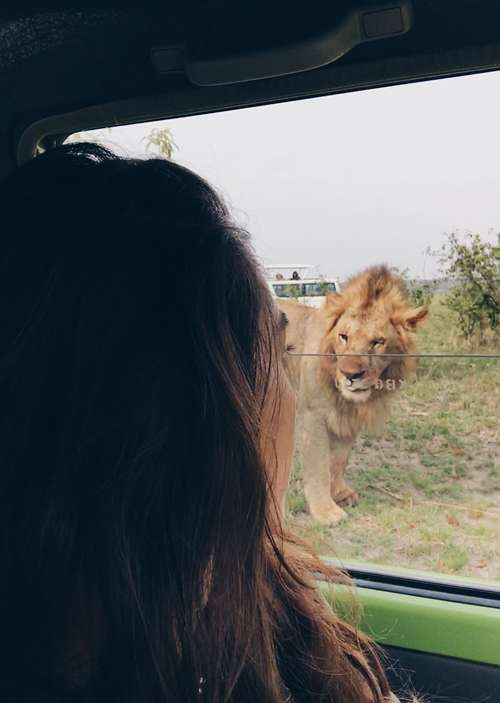
- In Kenya, the lion population has significantly declined over the past 50 years, from 30,000 animals to fewer than 2,000 today. Every year, 100 lions disappear, and the most rapid depletion occurs in the territories of the Maasai people.
- Lion populations across Africa have halved in the last 25 years.
- According to data from the Kenya Wildlife Service in 2012, there are now only 1,700 lions remaining in Kenya.
- August 10th is recognized as World Lion Day.
- The average lifespan of females is 14-16 years, while males typically live for 12-13 years.
Lions on the Verge of Extinction
The origins of present-day lions have been uncovered by scientists. By examining both living lions and remains in museums, researchers have revealed that the earliest ancestors of lions lived 124,000 years ago. Lions today are divided into two main groups: one group inhabiting Eastern and Southern Africa, and the other group found in Central, West Africa, and India. The second group is critically endangered. This means that half of the genetic diversity of the lion species alive today will be lost. For instance, it is estimated that there are fewer than 400 individuals of Asiatic lions remaining in India.
ELEPHANT
Elephants are considered the largest land animals. They do not have sweat glands. African elephants have a network of capillaries in their ears, which make up 1/6 of their body surface. By flapping their ears, elephants can regulate their body temperature. According to thermal camera images taken at the Vienna Zoo, the coldest part of an elephant’s body is its ears.
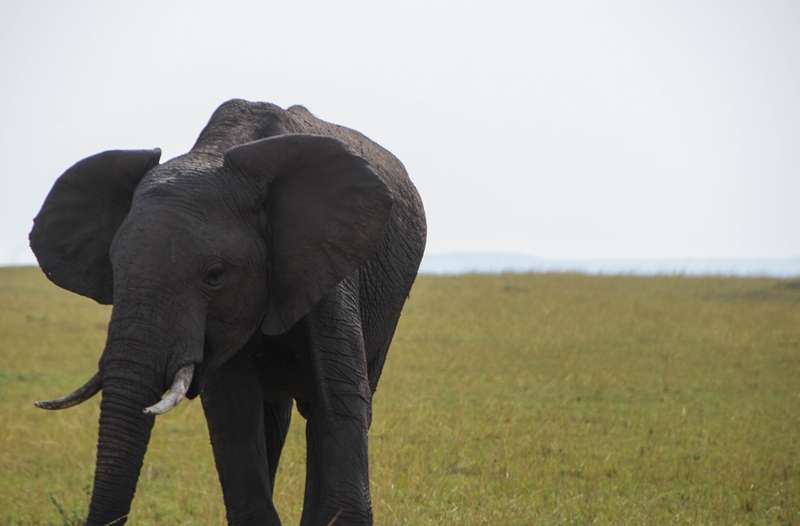
The White Gold of Africa, elephants, have become so popular primarily due to their tusks. The remaining teeth of the animals slaughtered for their ivory are crucial for the ivory trade. It is a harsh reality that between 2002 and 2012, approximately 800,000 elephants were killed, and today, there are only 400,000 elephants left in Africa. The obtained ivory is mainly sent to Far Eastern countries, with China being the primary destination. Once skillfully crafted, the ivory is sold to enthusiasts. Even today, ivory can be sold for one million dollars in China. With a kilogram of ivory valued at 1000 euros, it is a highly prized commodity as a souvenir, to the extent that those willing to purchase it unfortunately value the ivory more than the elephants themselves. Currently, 96 elephants are killed every day for the ivory trade. If they are not adequately protected, it is estimated that by the year 2023, the elephant population may become extinct.
Characteristics of Elephants
- The heart of an elephant can weigh up to approximately 20 kg. In the smallest elephants, this weight can be around 12 kg.
- Their brains weigh between 4-6 kg on average.
- They can hold up to 6 liters of water in their trunk at once. They consume an average of 200 liters of water per day, which is why they prefer to live in wetland areas.
- They consume an average of 200 kg of food per day.
- They have a total of 24 teeth. Although we refer to the ones on the sides of their mouth as “ivory,” they are actually tusks, not teeth.
- The average lifespan of an elephant is 70 years.
- They have a matriarchal social structure, with the female elephant being the leader. Being social animals, they always move in herds.
- The gestation period of elephants is 22 months. They give birth to a single calf, which weighs an average of 120 kg at birth. The calves nurse until the age of 3.
- To draw attention to the threat of poaching that elephants face, World Elephant Day is celebrated annually on August 12th.
- Elephants are divided into African and Asian elephants. African elephants have larger and wider ears, a more rounded head, while Asian elephants have two depressions on their head resembling humps and smaller, less defined ears.
RHINO
White rhinoceroses are the second-largest land mammals after elephants. While an elephant weighs around 7,000 kilograms, a rhinoceros weighs around 3,500 kilograms. It also holds a place among the Big Five.
Their height can reach up to 1.82 meters, and their length can extend up to 3.35 meters.
There are five species of rhinoceros, three of which are found in Asia and two in Africa (White rhinoceros, Black rhinoceros, Indian rhinoceros, Sumatran rhinoceros, and Javan rhinoceros).
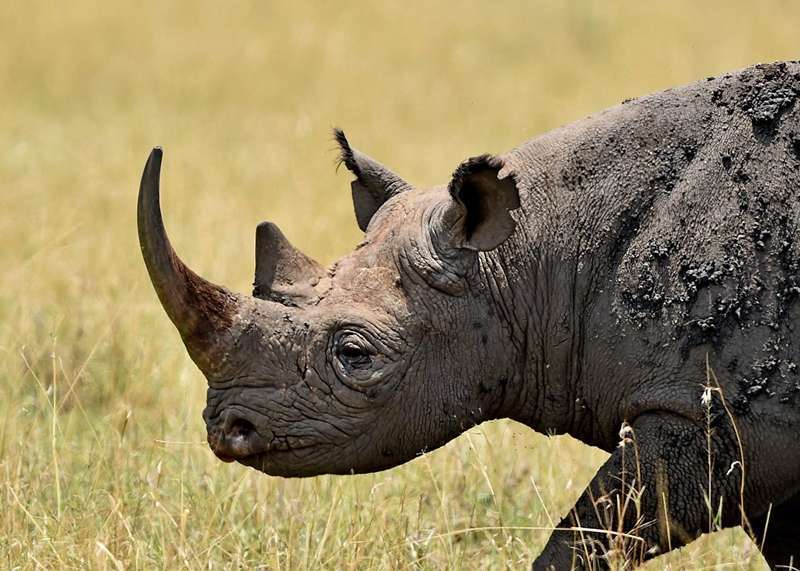
Due to their thick and sensitive skin, rhinoceroses often roll in mud to protect themselves from the sun and insects. Drying mud on their bodies becomes their only solution.
Despite their large size, their brains are relatively small. However, this does not imply that they are unintelligent.
The name “white rhinoceros” originates from the African word “weit,” which means wide. This term was initially used to describe the rhinoceroses’ wide mouths. However, it was later translated by the English as “white,” and they came to be known as white rhinoceroses.
Despite their bulky build, they can reach speeds of 30 to 40 miles per hour.
Their gestation period lasts 15 to 16 months. The calf stays with its family until it reaches the age of three.
So, what are these black and white rhinoceroses?
Actually, they appear similar from the outside. The best way to differentiate them is through their lip structure. The white rhinoceros has a wide lip, while the black rhinoceros has a hooked lip. Whites are more social and live in groups, while blacks are more solitary and aggressive.
In the late 19th century, rhinoceros populations were around one million. However, by the 1970s, their numbers had dropped to 70,000, and today, only 28,000 individuals remain. Three out of the five rhinoceros species have become extinct. While those fortunate enough to travel to Africa and Asia may still have the chance to see them, it is a heartbreaking situation to think whether our children will be able to witness them in just 5-10 years. We believe that we are among the lucky ones who have taken our place among those fortunate individuals. Let us not contribute to the extinction of rhinoceroses, who have been a part of the ecosystem for millions of years (40 million years), by allowing poachers to kill them for their horns, which are sold as valuable souvenirs or for medicinal purposes in China and Vietnam.
In Kenya, there are only 680 black rhinoceroses remaining.
BUFFALO
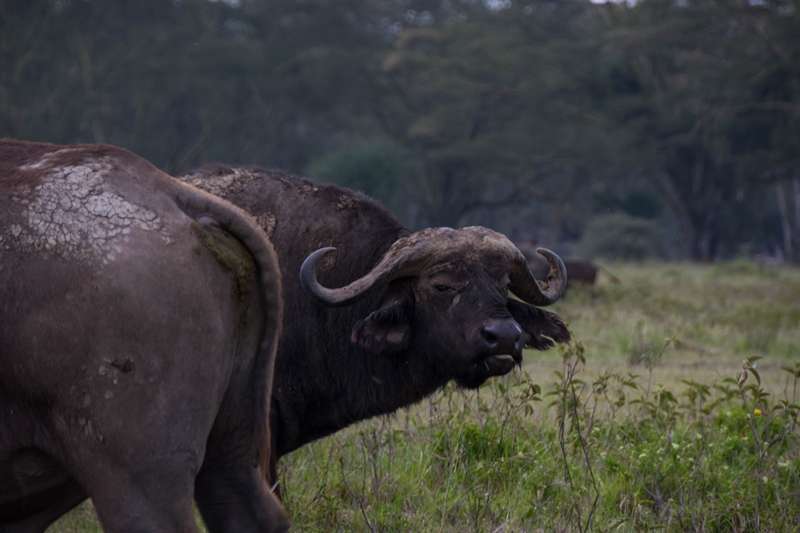
There are two types of buffalo found in Africa. One is the Cape Buffalo, and the other is the Water Buffalo. It is well known that buffaloes are dangerous animals. However, if we compare the two, Cape Buffaloes are known for their quicker temperament. During your safari in Africa, you will encounter Cape Buffaloes frequently, second only to antelopes.
LEOPARD
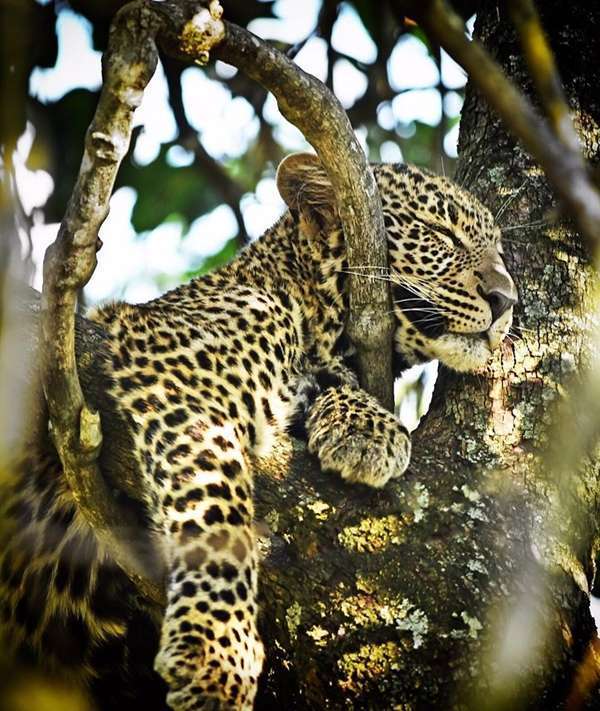
It is an elusive animal that is part of the Big Five and quite challenging to spot. During our first safari in 2016, unfortunately, we had a missing piece as we couldn’t see the leopard. However, in 2017, we had another chance and managed to catch a glimpse, albeit a small one. How is it possible to have a small glimpse? Leopards are often seen perched on tree branches. Therefore, during the safari, it is crucial for your local guide or driver to be observant and notice their presence. Being camouflaged in dense vegetation and resting on tree branches, leopards are among the most difficult animals to spot.
Serengeti or Masai Mara?
When it comes to safari in Africa, there are two main national parks where you can experience it: Serengeti in Tanzania and Masai Mara in Kenya. In Serengeti, you can see the animals for 9 months, while in Masai Mara, this period is reduced to 3 months. However, we would like to emphasize that there is one key difference between them.
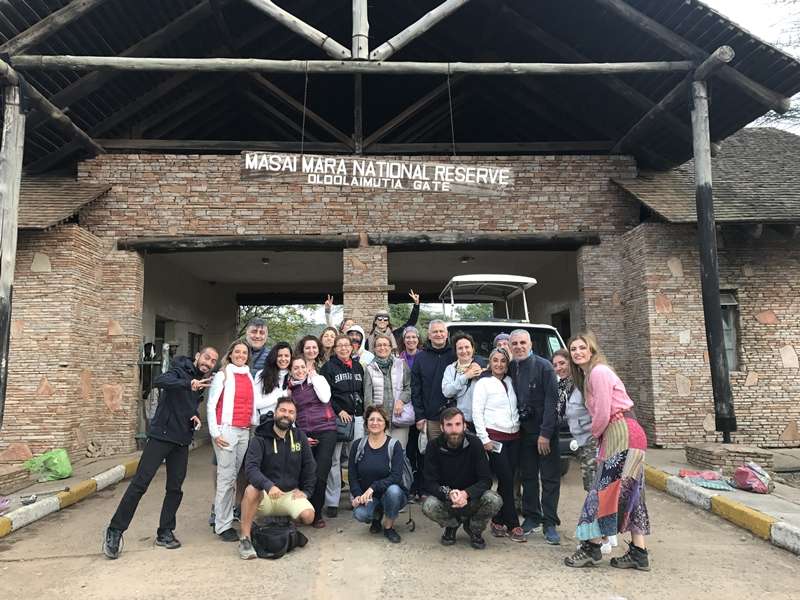
Serengeti National Park is spread over a much larger area compared to Masai Mara, which results in animals being more scattered. This requires us to drive long distances to see the animals in groups. On the other hand, Masai Mara National Park covers an area of 1,510 square kilometers, providing more opportunities to see animals. Established as a wildlife park in 1961, it is located within the Great Rift Valley. Approximately 290,000 people visit Masai Mara National Park each year. In addition to offering more wildlife sightings, it is also considered one of the top five bird-watching destinations in the world. Masai Mara ecosystem has the highest population of ostriches and is home to the unique species of grey-crowned crane.
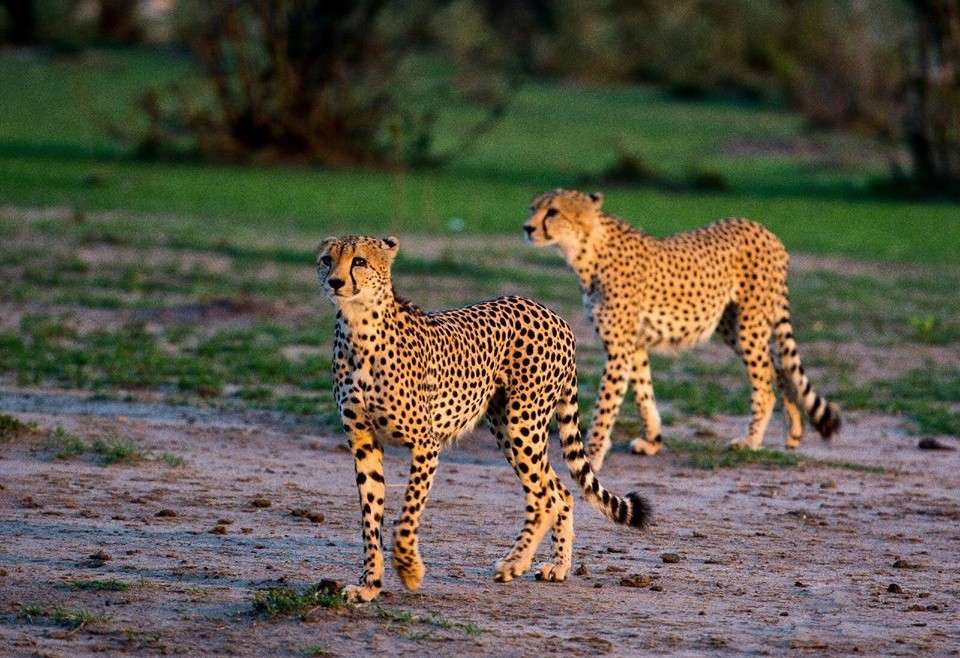
Wildlife & Animals – Masai Mara National Reserve
- Aardvark
- Agama / Reptiles
- Aardwolf
- Chameleon/ Reptiles
- Baboon
- Crocodile / Reptiles
- Gecco / Reptiles
- Black Rhino
- Bush Baby
- Terrapin / Fresh water turtle
- Caracal
- Tortoise
- Cheetah : The cheetah is the fastest runner on the planet. It can sprint at speeds of up to 115 km/h (71 mph) for 7 to 8 seconds while attacking its prey. However, it is successful in catching its prey in only a few of these attacks.
- Civet Cat
- Crested Porcupine
- Dik dik / Small kind of antelope
- Duiker : Small and medium size of antelope
- Elephant
- Giraffe
- Gazelle
- Hippopotamus
- Hyrax
- Impala
- Jackel
- Leopard
- Lion
- Oribi
- Topi – Wildebeest : African Antelope. The wildebeest is the fastest antelope species in Africa.
- Zebra
Here are some preparations to make before going on a safari:
The clothes you should take with you:
- A sweatshirt or woolen sweater to keep you warm in the mornings and evenings.
- 2-3 pairs of pants, 3 shorts, 4 t-shirts, and 2 shirts.
- It is recommended to have a shawl to protect your face from dust within the safari area.
- Closed-toe shoes, it doesn’t have to be hiking shoes, choose something comfortable for you.
- A pair of socks for each day.
- Slippers or sandals to use in your tent and around the campsite after the safari.
- Underwear.
- Raincoat.
Personal Items:
- Wet wipes
- Travel-sized shampoo and shower gels (placing them in travel-sized containers will save space in your luggage)
- First aid kit
- Hat and sunscreen
- Hair dryer
- Adapter for Type G sockets (depending on the destination)
- Make sure to have a flashlight as power cuts may occur in camps
- Binoculars
Lens Recommendations for Safari:
- 70-200mm f/4 Nikon/Canon
- 80-400mm f/4.5-5.6 Nikon
- 200-400mm f/4 lens – Nikon
Note that devices like GoPro and similar ones may be insufficient for capturing animal photographs during Safari.
Know When to Go on Safari
